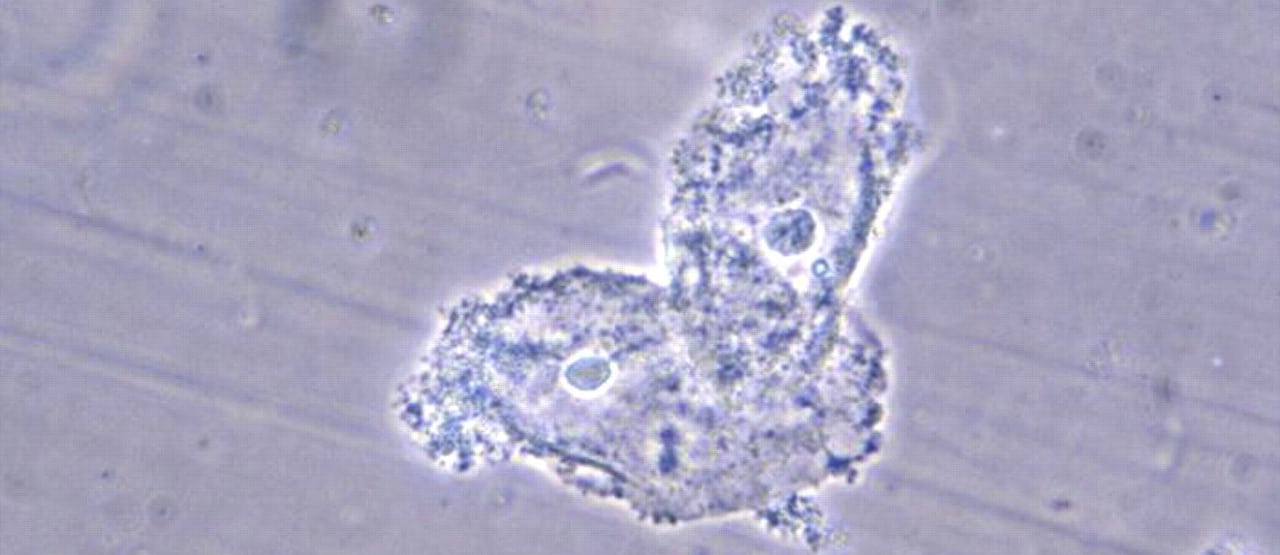In the same way fermented pickles, kimchi, and sauerkraut foster the growth of good bacteria by maintaining an acidic environment, so does the human vagina. The normal pH of one’s vagina is that of tomato juice. However, once it starts creeping up to that of coffee, an overgrowth of bad bacteria can take hold and cause bacterial vaginosis, which affects an astounding 29 percent of American women, nearly 1 in 3. That makes it the most frequent cause of vaginal complaints among younger women. It’s commonly diagnosed with the so-called “Whiff Test,” where the doctor takes a whiff of the vaginal discharge, sniffing for the characteristic fishy odor.
The fishy odor is a consequence of a compound of decay called putrescine, which is also found in certain foods. More about these “biogenic amines” in:
Traditional risk factors for bacterial vaginosis include douching, which has also been associated with a wide range of problems. With no demonstrable benefits and considerable evidence of harm, douching should be strongly discouraged. Medical professionals need to clearly explain to women that the vagina is naturally self-cleaning.
Nasal douching, though, is another matter entirely. See The Risks and Benefits of Neti Pot Nasal Irrigation and my answer about the “brain-eating amoeba.”
Recently, poor nutrition has been added to the list of risk factors for bacterial vaginosis. Women appear more likely to get bacterial vaginosis if they have lower circulating levels of phytonutrients like vitamin C and beta carotene in your bloodstream—indicating a lower intake of fruits and vegetables. In recent years, though, the field of nutrition has shifted toward examining overall dietary scores as opposed to single nutrients, because it has become recognized that nutrients are not consumed in isolation. To help consumers eat healthier foods, nutrient-rich food indices have been devised. Using these indices, researchers have found that the more nutrient rich one’s diet, the lower one’s apparent risk for bacterial vaginosis.
Why might a healthier diet improve vaginal health? Researchers suggest that high fat intake, particularly saturated fat may increase vaginal pH, thereby increasing the risk of bacterial vaginosis. As you can see in the associated video Bacterial Vaginosis and Diet, most saturated fat in the American diet comes from dairy, desserts, and chicken. The researchers conclude: “The next steps ahead include sharing these findings with gynecologists, obstetricians, and general practitioners, as well as increasing the awareness of the general community to the importance of optimal nutrition… to prevent infections of the genital tract, reduce associated disease, and maintain reproductive health.”
More on the detrimental effects of saturated fat in videos such as:
- Beauty Is More Than Skin Deep
- Dead Meat Bacteria Endotoxemia
- Breast Cancer Survival, Butterfat, and Chicken
- How to Help Prevent Abdominal Aortic Aneurysms
- Trans Fat, Saturated Fat, and Cholesterol: Tolerable Upper Intake of Zero
More on vaginal health in Treating Genital Warts With Green Tea and more on achieving maximum nutrient density in Calculate Your Healthy Eating Score.
What about male reproductive health? See Male Fertility and Diet.
-Michael Greger, M.D.
PS: If you haven’t yet, you can subscribe to my videos for free by clicking here and watch my full 2012 – 2015 presentations Uprooting the Leading Causes of Death, More than an Apple a Day, From Table to Able, and Food as Medicine.
